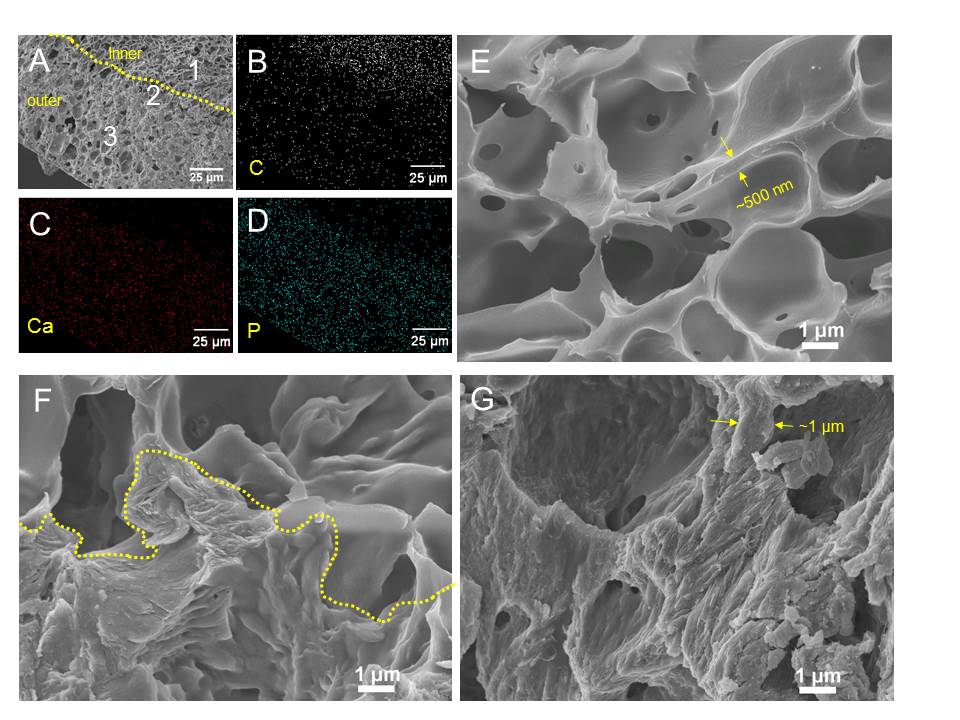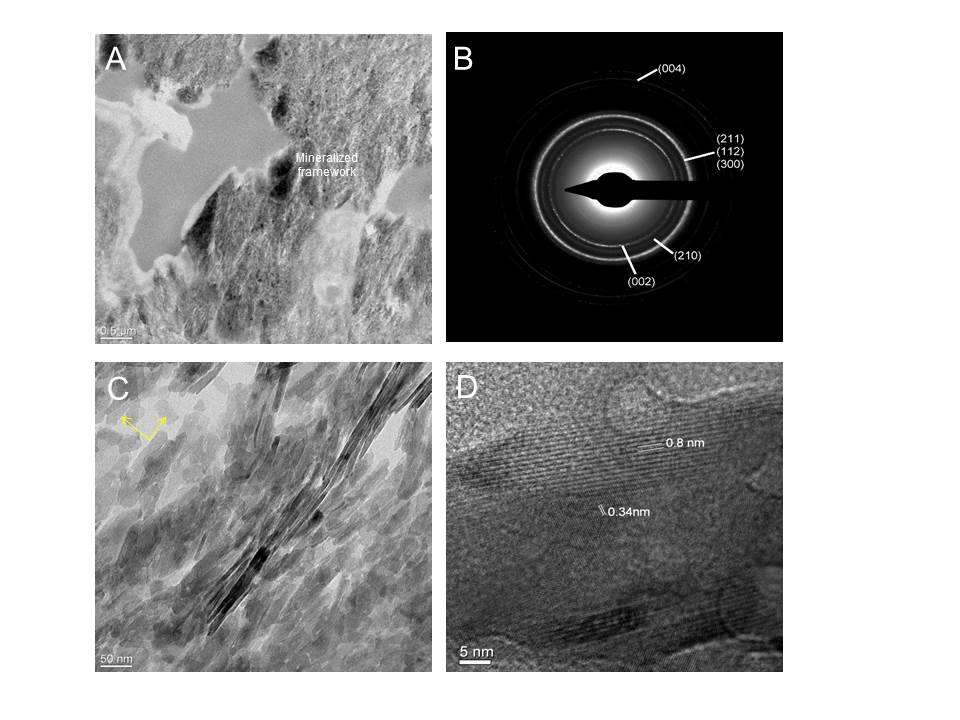Introduction: Calcium phosphate mineralization in polymeric matrices is receiving significant attention in terms of obtaining biomimetic inorganic-organic structures with unique mechanical properties and understanding the mechanisms of biomineralization. Many polymeric scaffolds were designed to template mineralization using functional groups such as anionic, cationic or zwitterionic residues. However, mineralization of polymeric bulk scaffolds often resulted in the heterogeneous nucleation of hydroxyapatite (HA) on the surface of substrates or loosely trapped within porous scaffolds, compromising their integration. Here, we used elastin-like recombonimers (ELRs) as a structural template and a non-classical mineralization process to obtain hybrid nanocomposites with defined and controlled morphologies and superior mechanical properties.
Methods: ELRs were synthesized according to the published procedures[1]. They were cross-linked with 1-ethyl-3-[3-dimethylaminopropyl] carbodiimide hydrochloride and N-hydroxysuccinimide and then mineralized via the polymer-induced liquid-precursor (PILP) process[2]. The mineralization solution was prepared with 9 mM CaCl2·2H2O, 4.2 mM K2HPO4 in Tris-buffer (pH 7.4 at 37°C). poly-L-aspartic acid (polyAsp) (Mw: 27,000 Da) was dissolved in the CaCl2 solution before mixing. DSC, SEM, TEM-SAED, XRD, micro-CT and nanoindentation were used to characterize the mineralized ELR hydrogels.
Results and Discussion: After 14 days of mineralization, about 80-µm mineral penetration depth was achieved and the minerals specifically deposited within the framework of the ELR hydrogel, preserving its microporous structure.

The texture of the mineralized region showed striking similarity to that of cortical bone. SAED and XRD confirmed the formation of HA. TEM images revealed that the HA nanocrystals were randomly oriented in the ELR matrices.

The elastic modulus and hardness were 20.3 ± 1.7 and 0.93 ± 0.07 GPa in dry state and 4.50 ± 0.55 and 0.10 ± 0.03 GPa in wet state.

These results suggested that the ELRs underwent mirophase separation and formed nanopores for the infiltration and deposition of the liquid-like amourphous CaP, which further solidified into HA nanocrystals.
Conclusions: We have demonstrated that the hydrogels of the ELRs templated calcium phosphate mineralization where the minerals selectively deposited within the hydrogel framework, producing microporous composites with comparable mechanical properties to those of natural bone. The use of the ELR hydrogels opens the possibility to study in vitro model systems of the biomimetic processes. By designing the sequence and morphologies of the ELRs molecules and matrices, diverse hybrid nanocomposites with optimized mechanical and biological properties can be constructed.
3M Foundation Non-Tenured Faculty Award; The European Commission under FP7 and H2020 programs (NMP3-LA-2011-263363; HEALTH-F4-2011-278557; PITN-GA-2012-317304; MSCA-ITN-2014-ETN- 642687; H2020-NMP-2014- 646075); The Ministry of Economy and Competitiveness (Spain) (MAT2012-38043-C02-01; MAT2013 -41723-R; MAT2013 -42473-R)
References:
[1] Girotti, A., et al., Design and bioproduction of a recombinant multi(bio)functional elastin-like protein polymer containing cell adhesion sequences for tissue engineering purposes. Journal of Materials Science-Materials in Medicine, 2004. 15(4): p. 479-484.
[2] Li, Y.P., et al., Biomimetic Mineralization of Woven Bone-Like Nanocomposites: Role of Collagen Cross-Links. Biomacromolecules, 2012. 13(1): p. 49-59.